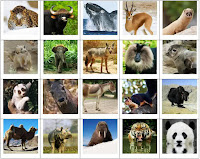…the divinity of God, which is the totality of all
perfections, reveals itself in the reality of man -- that is, the divine
Essence is the sum total of all perfections, and from this station it casts a
ray of its splendour upon the human reality. In other words, the Sun of Truth
is reflected in this mirror. Thus man is a perfect mirror facing the Sun of
Truth and is the seat of its reflection. The splendour of all the divine
perfections is manifest in the reality of man, and it is for this reason that
he is the vicegerent and apostle of God. If man did not exist, the universe
would be without result, for the purpose of existence is the revelation of the
divine perfections. We cannot say, then, that there was a time when man was
not. At most we can say that there was a time when this earth did not exist,
and that at the beginning man was not present upon it.
But from the beginning that has no beginning to the end that
has no end, a perfect Manifestation has always existed. This Man of Whom we
speak here is not just any man: That which we intend is the Perfect Man. For
the noblest part of the tree, and the fundamental purpose of its existence, is
the fruit. A tree without fruit is of no use. Therefore, it cannot be imagined
that the world of existence, whether in the realms above or below, was once
populated by cows and donkeys, cats, and mice, and yet was deprived of the
presence of man. What a false and vacuous notion!
- ‘Abdu’l-Baha (Table
talks in Akka, authenticated by ‘Abdu’l-Baha; ‘Some Answered Questions’ – 2014
revised translation by the Baha’i World Centre)












































